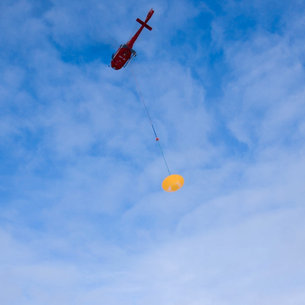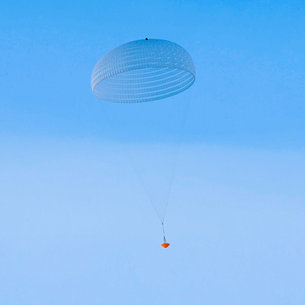29.03.2018

FIRST TEST SUCCESS FOR LARGEST MARS MISSION PARACHUTE
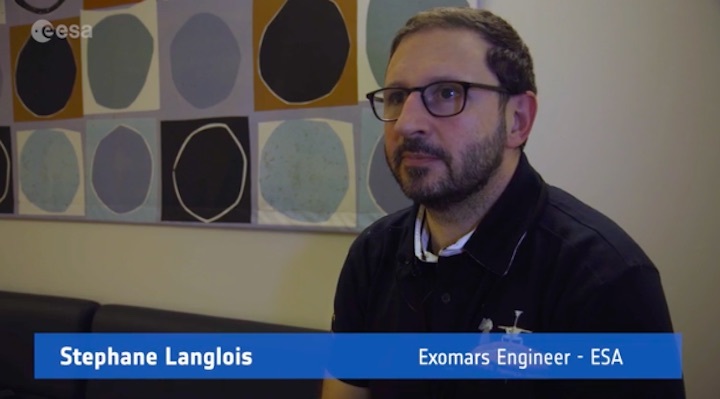
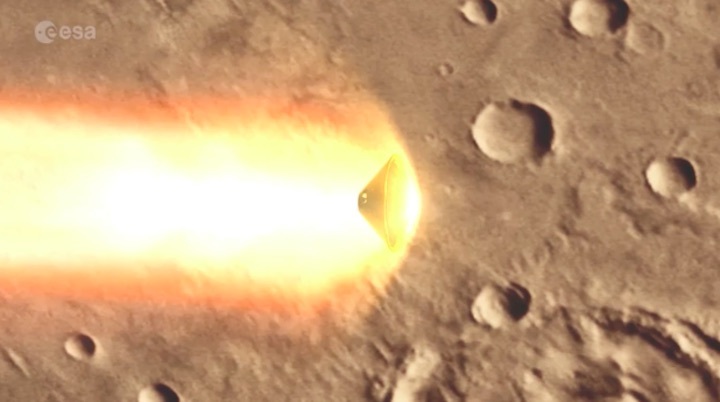


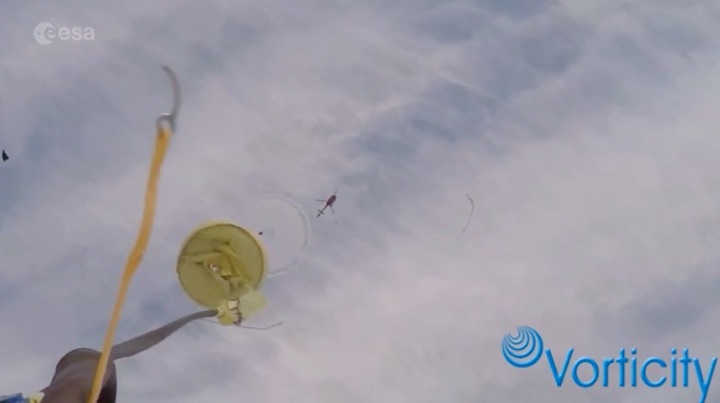
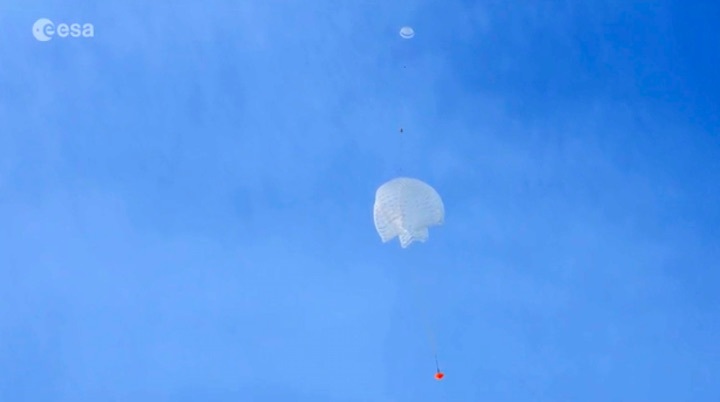
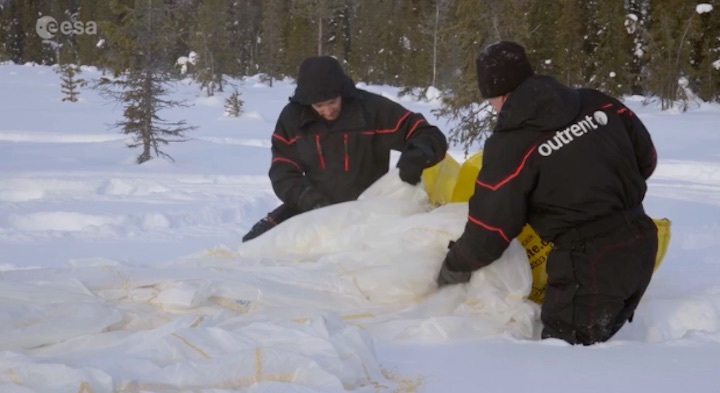
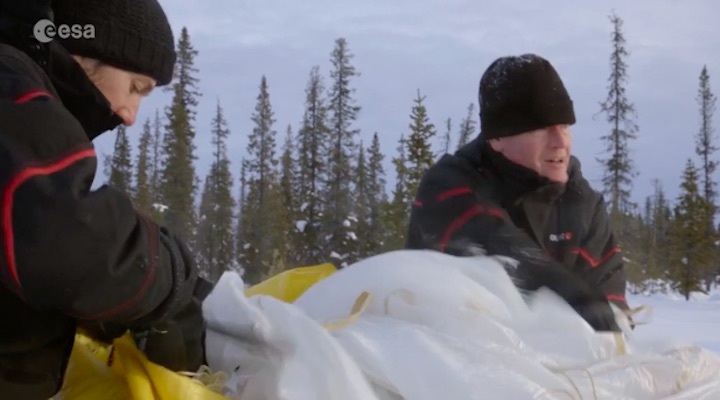
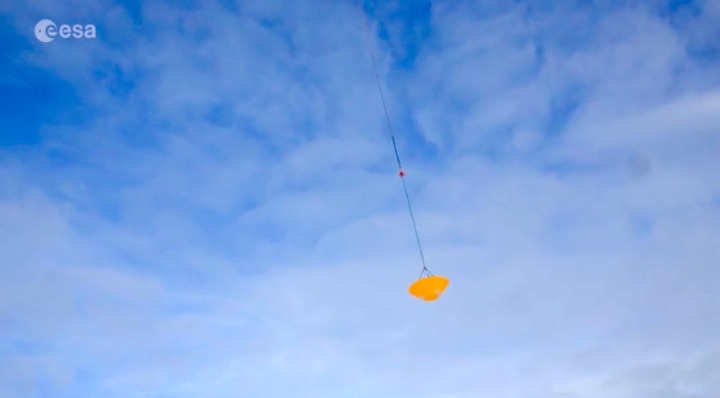
The largest parachute ever to fly on a Mars mission has been deployed in the first of a series of tests to prepare for the upcoming ExoMars mission that will deliver a rover and a surface science platform to the Red Planet.
The spacecraft that will carry them is due for launch in July 2020, with arrival at Mars in March 2021. The rover will be the first of its kind to drill below the surface and determine if evidence of life is buried underground, protected from the destructive radiation that impinges the surface today.
A carrier module will transport the rover and the science platform to Mars within a single aeroshell. A descent module will separate from the carrier shortly before reaching the atmosphere, whereupon a heatshield, parachutes, thrusters and damping systems will reduce the speed, delivering them safely to the surface.
The focus of the latest test, conducted in sub-zero conditions in Kiruna, Sweden earlier this month, was the 35 m-diameter second main parachute. The test demonstrated the deployment and inflation of the parachute with its 112 lines connected to a drop test vehicle, via the deployment of a smaller 4.8 m-wide pilot chute.
The complete parachute system, totaling some 195 kg, is stowed in a dedicated canister. The second main parachute of 70 kg is folded with its 5 km of cords in a precise way – a process that takes around three working days – to ensure it is extracted properly.
The assembly was lofted 1.2 km above the ground with a helicopter, and the sequence initiated after the vehicle was released. About 12 seconds after the pilot chute was inflated, the second parachute release was triggered.
GoPro cameras on the 500 kg test vehicle looked up at the parachute inflation, and onboard equipment sent telemetry in real time as it descended in about two and a half minutes to the ground.
“The successful deployment of our large ExoMars parachute using a smaller pilot chute and its subsequent stable descent without damage, is a major milestone for the project,” says ESA’s Thierry Blancquaert.
“It was a very exciting moment to see this giant parachute unfurl and deliver the test module to the snowy surface in Kiruna, and we’re looking forward to assessing the full parachute descent sequence in the upcoming high-altitude tests.”
That testing will see the equipment dropped from a stratospheric balloon from nearly 30 km, to more accurately represent the low atmospheric pressure on Mars – a vital aspect when considering parachute inflation.
The subsequent tests will also investigate the full parachute deployment sequence, which comprises two main parachutes, each with a pilot chute.
The dual parachute approach accommodates the much heavier descent module of the ExoMars 2020 mission – some 2000 kg compared with nearly 600 kg of the previous mission.
Quelle: ESA
---
Update: 20.06.2018
.
Rover test: What's it like to ride a rocket to Mars?
So, if you spend a billion euros on a space mission, you better be sure it can survive the rocket ride off Earth.
This video shows a model of Europe's upcoming Mars rover being shaken to simulate the violent first few minutes of flight on leaving the launch pad.
ExoMars, as it is known, is a joint project with Russia to put a mobile laboratory on the surface of the Red Planet in 2021.
The hi-tech rover will look for signs of past or present life.
The vehicle pictured being put through a shake test at Airbus in Toulouse, France, is what is called a Structural Thermal Model, or STM.
It is a near-exact copy of the rover that will eventually be sent to Mars.
Engineers use this STM to run the rule over their design.
If there are flaws and something breaks on this test model, the engineers have time to make revisions for the "flight model".
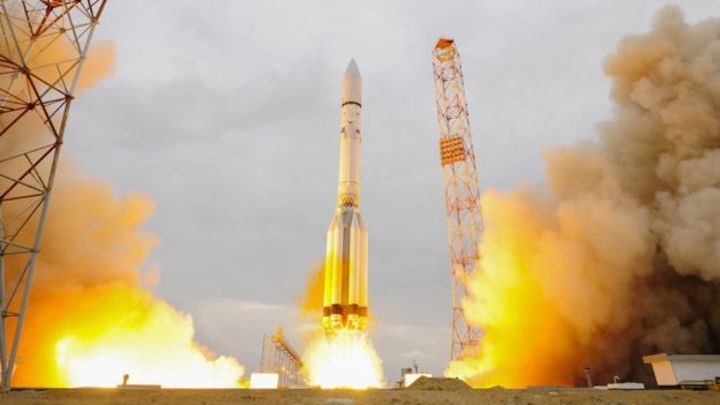
The rover will be despatched on a Russian Proton vehicle
-
Peak frequencies in these shake tests reach 100Hz (100 cycles a second). G-forces (accelerations relative to standard Earth gravity) of 10.5 are achieved.
As well as being shaken, the STM has to spend time in a special chamber to see that it can cope with the sort of temperature extremes experienced during a Mars mission. It will have to show it can also perform in a vacuum.
The flight rover will follow behind the STM and repeat all the same checks.
The ExoMars mission is due to launch to the Red Planet on a Proton rocket in 2020.
European Space Agency member states, Russia and America have contributed instrumentation.
A key experiment will be to drill up to 2m below the surface of Mars.
It is thought that if any microbes exist on Earth's neighbour, they will be below ground. To date, surface missions have never got more than a few centimetres into the covering rock and dust.
The European industrial team working on ExoMars is led from Thales Alenia Space in Turin, Italy.
The flight model for ExoMars is currently being assembled at Airbus's British factory in Stevenage.
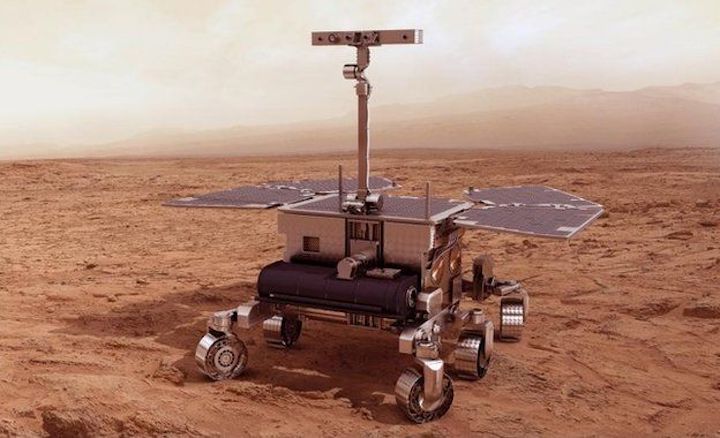
Artwork: The ExoMars rover will launch in 2020 and land in 2021
Quelle: BBC
---
21.07.2018
Wanted: Inspiring name for Europe's 2020 Mars rover
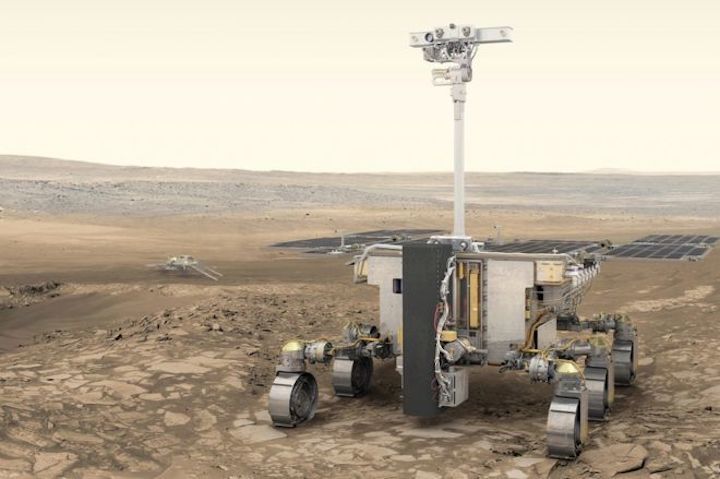
Here's your chance to name the European rover that will go to Mars in 2020.
Currently called ExoMars, the six-wheeled robot needs something a bit more engaging and inspiring for when it lands on the Red Planet.
Astronaut Tim Peake is leading the hunt for a great moniker.
He wants everyone to go to a special website set up for the purpose and enter a suggestion. But don't think "Spacey McSpaceFace" is a goer because this is not an online poll.
All ideas will be put before an expert panel and it is they who will make the final choice.
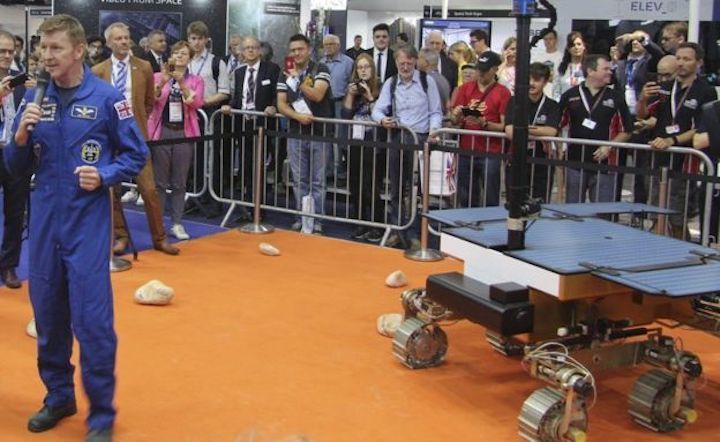
The vehicle is currently being assembled at the Airbus factory in Stevenage.
Its job when it lands on Mars in 2021 will be to seek out signs of present or past microbial life. The robot will even have a drill to dig 2m into the ground to see if any bugs are hiding away from the surface.
Tim says thinking about the rover's mission might be the source for a great name. "I often get asked, 'is there life out there beyond Earth?'. It's a very fundamental question, and it's one that this rover is going to try to answer," he told BBC News.
Dr David Parker, the director of human spaceflight and robotics at the European Space Agency, agreed: "The Americans called their Mars rovers Spirit, Opportunity and Curiosity. We've tended in the past to name our missions after famous scientists.
"But, yes, perhaps this time we go with a name connected with the search for life - biology, genetics, DNA, whatever. Who knows? We just want a great name."
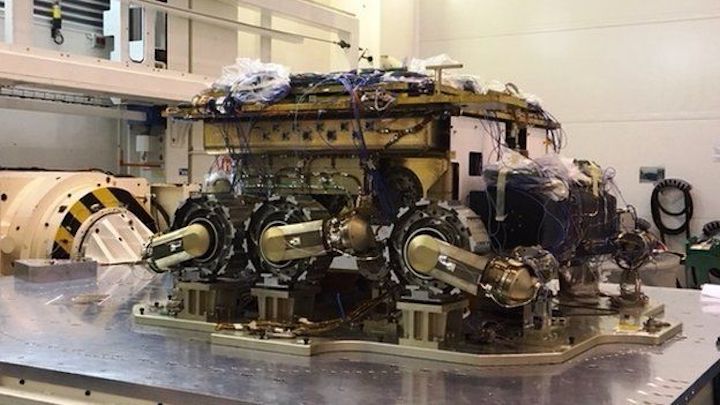
Britain acquired the naming rights for the rover at Esa's Ministerial Council in 2014. It got them because the country is the key financial contributor to the rover; part of Europe's two-part ExoMars project. The other part is a satellite that is already orbiting the planet studying its atmosphere.
However, the UK Space Agency says it wants the search for a name to be as wide as possible. This means anyone resident in an Esa member state can put forward a suggestion (including associates, eg Canada).
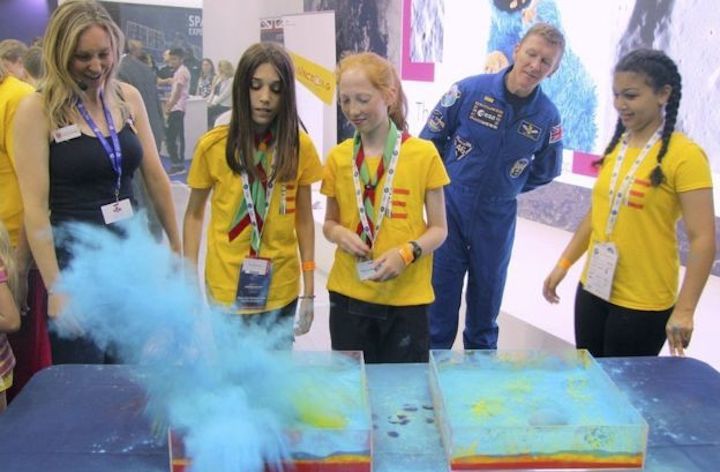
Tim Peake launched the name search at the Farnborough International Air Show on Friday. He used the same event to kick off the Holiday Makers campaign - an initiative aimed at getting children making, inventing and exploring engineering.
The campaign is running a series of free family-friendly activities and events across the country as part of the government's Year of Engineering.
The Esa man was helped by Dr Suzie Imber, from the University of Leicester's Department of Physics and Astronomy. Suzie won the BBC show Astronauts: Do You Have What It Takes?"
She said: "It's always a delight to open young people's eyes to how exciting engineering and science can be and the government's Year of Engineering campaign is a fantastic way that scientists like Tim and me can share some of the amazing research that is happening in labs across the country, and the vital role engineers play in this."
Quelle: BBC
---
Update: 8.11.2018
.
ExoMars: Where to send Europe's robot rover?
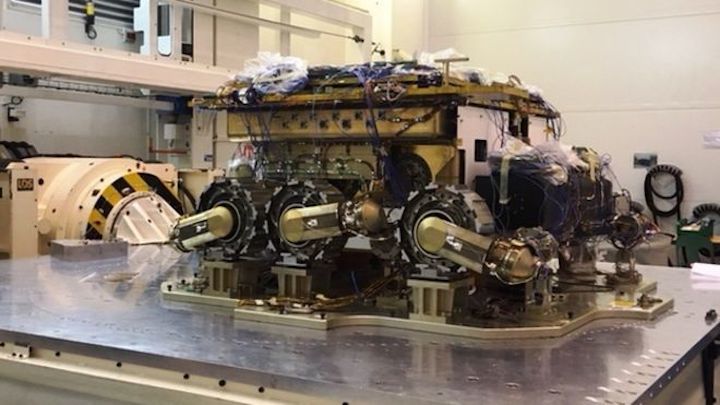
Scientists and engineers are to meet in Leicester to choose a landing site on Mars for Europe's 2020 rover.
The six-wheeled robot will be targeted at one of two near-equatorial terrains on the Red Planet.
The ExoMars Site Selection Working Group must weigh which of the pair represents the biggest scientific interest but also offers a fair chance of getting down safely.
Landing on the planet is notoriously hard. Most efforts have failed.
Assuming ExoMars can overcome this hurdle, it will use a package of instruments to look for signs of past or present life, employing a drill to extend the search below the harsh conditions that persist at the planet's surface.
The meeting at Leicester's university has been convened by the European Space Agency (Esa) and comprises senior academics and officials from industry. Russia, a joint partner on the mission, is also well represented.
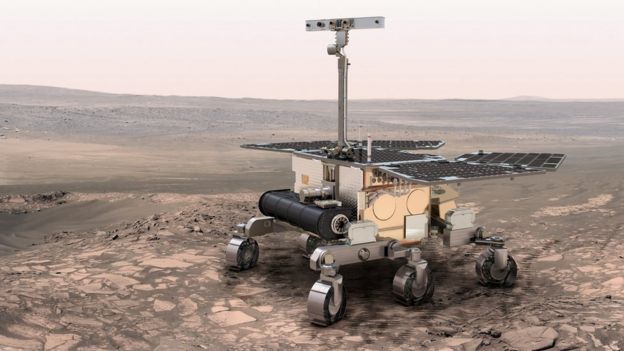 Image copyrightESA
Image copyrightESA
What is the choice?
The working group will spend Thursday and Friday discussing the merits and shortcomings of Oxia Planum and Mawrth Vallis.
Scientifically speaking, these locations are quite similar. They are ancient landscapes that contain abundant clays - the type of sediments which result from the alteration of rock through prolonged contact with water.
It is in just this kind of setting where you might find evidence for ancient microbial life.
Curiosity, the American rover currently operating on Mars in a deep bowl known as Gale Crater, has detected clay minerals in mudstones that very probably formed in lakes and the streams that fed them.
The sediments of interest at Oxia Planum and Mawrth Vallis likely had similar sorts of origins.

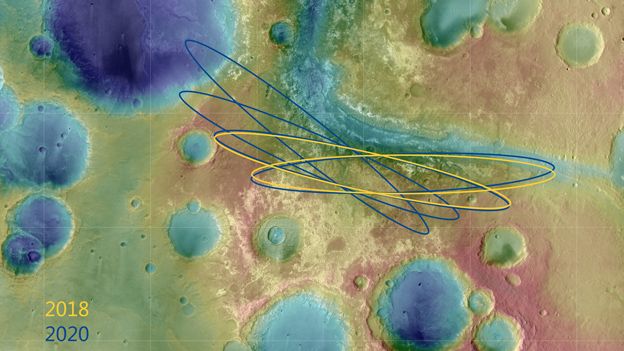
Is science the only consideration?
Far from it. Great scientific prospects count for nothing if you cannot land the robot in one piece.
Europe's previous touch-down effort, the Schiaparelli mission, crashed into Mars' surface in 2016 when the probe's onboard computer became confused about its altitude during the descent and switched off the braking thrusters far too early.
Schiaparelli smacked into the ground at over 300km/h.
ExoMars will be using a similar entry, descent and landing strategy that incorporates a capsule, a parachute system and retro-rockets.
A factor that will bear heavily on the Leicester discussions is the knowledge that Oxia is at a much lower elevation than Mawrth - by about 1,000m. This would give the descending robot's parachute much longer to bite Mars' thin atmosphere and slow the supersonic approach towards the surface.
What else has to be thought about?
In addition, Mawrth's position is slightly to the north of Oxia.
The angle of approach required to get to this higher latitude necessarily produces greater uncertainty in the eventual touch-down point.
Engineers talk of confidence zones that are elliptical in shape. For both locations these ellipses are 19km wide, but, in the case of Mawrth, the length is 190km. For Oxia, it's 104km.
High-resolution satellite images have been acquired of both sites.
These will have been examined for hazards such as steep slopes and deep gullies, and also for the preponderance of large boulders. ExoMars will come down on its Russian-built lander. If the legs find very uneven ground, the rover might not be able to drive off the platform, or, worse still, be tipped over.
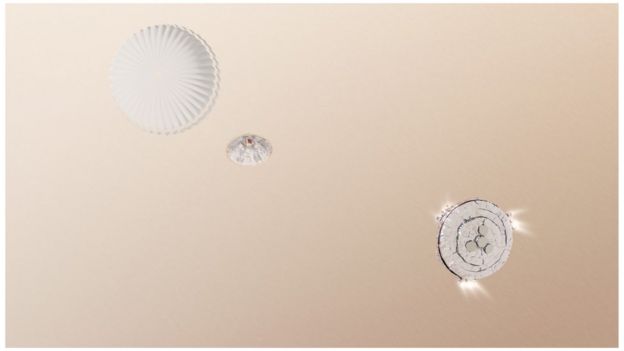 Image copyrightESA
Image copyrightESA
How is the rover's development progressing?
This is a mission that has experienced delay after delay.
Originally set for 2011, the launch from Earth slipped to 2013, to 2016, to 2018, and is now scheduled for mid-2020.
This means all the various components of the mission - the rover, its landing mechanism and the cruise vehicle that shepherds everything from Earth to Mars - really need to be at Russia's Baikonur launch site in about a year's time to begin final integration and testing.
Officials say the schedule, despite some hiccups, is on track.
Clear signs that we are getting close include the inauguration of the rover's mission control in Turin later this month.
One very good piece of news to report is the restoration of autonomous navigation to the robot. This software will enable ExoMars to find its own way across the ground without the constant intervention of engineers back on Earth, and should speed up dramatically its ability to survey scientifically interesting places to drill.
When do we get a decision?
America is also sending a rover to Mars in 2020. This is, broadly speaking, a copy of the Curiosity rover, although it will have different instrumentation and seek to find rock samples it cache for later return to Earth laboratories.
As with ExoMars, this mission is going through a site selection process. This should produce a recommendation sometime before the end of the year.
The Leicester working group's deliberations are closed to the media, but an announcement on its preference is promised for Friday afternoon.
Protocol requires this be signed off by the heads of Esa and the Russian space agency (Roscosmos) before it becomes ExoMars' official destination, but it is highly unlikely that the Leicester choice would be blocked.

ExoMars: Life-detecting robot to be sent to Oxia Planum
The robot rover that Europe and Russia will send to Mars in 2020 will be targeted at a near-equatorial site on the Red Planet known as Oxia Planum.
The area was recommended by an expert panel meeting at Leicester University.
Oxia is rich in clays and other minerals that have resulted from prolonged rock interactions with water.
The ExoMars vehicle will carry a drill and sophisticated instruments to this ancient terrain to look for signs of past or even present life.
Technically, Oxia remains just a recommendation at this stage; it still needs to be signed off by the heads of the European and Russian space agencies.
But it is hard to see the considered view of the Landing Site Selection Working Group (LSSWG) being overturned.
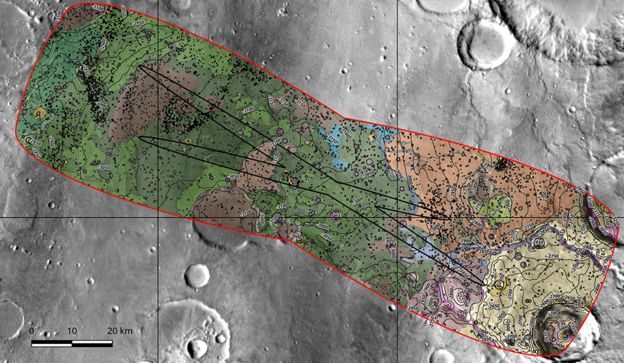 Image copyrightIRSPS/TAS; NASA/JPL-CALTECH/ARIZONA STATE UNIVERSI
Image copyrightIRSPS/TAS; NASA/JPL-CALTECH/ARIZONA STATE UNIVERSI
The two-day gathering in Leicester was informed by specialists in Mars geology, and engineers whose chief concern was identifying a location that minimised the risks of landing.
Getting down safely to the surface of the Red Planet is notoriously difficult. More than half of all missions that have tried have failed.
The most recent European effort in 2016, for example, crashed into the ground at over 300km/h.
The LSSWG had been discussing landing options for more than four years, pulling in comments from the wider community.
But this week's meeting came down to a straight fight between Oxia and a place just to the north called Mawrth Vallis.
Both "finalists" hold promise for finding the traces of long-ago microbial activity. However, after hearing all the submissions - the working group has decided Oxia represents the best combination of compelling science and engineering caution.
 Image copyrightESA
Image copyrightESA
Oxia lies about 18 degrees north of the equator, ensuring ExoMars' solar panels will get good exposure to sunlight all year round.
But it is the potential of what could lie under the rover's six wheels that most excites researchers.
Observations from orbit suggest the surface materials at this location contain abundant clays - the type of sediments that will result from rock-weathering processes involving water.
Investigations by the American robot Curiosity at another site halfway around the planet have already found fine-grained, clay-bearing mudstones that were laid down in a lake setting.
Researchers see evidence for lakes at Oxia, too - and rivers and deltas. And with ExoMars' specific life-detecting technologies, it might just be possible to find the traces of biological activity in the sediments.
 Image copyrightNASA/JPL/UNIVERSITY OF ARIZONA
Image copyrightNASA/JPL/UNIVERSITY OF ARIZONA
Prof John Bridges from Leicester University is a member of the working group. He commented: "With an enormous catchment area the sediments will have captured organics from a wide variety of environments over a long period of time, including areas where life may have existed. The fine sediments should also be ideal for the ExoMars drill - it aims to get to 2m depth."
The rover is set to blast off from the Baikonur cosmodrome in Kazakhstan between 25 July and 13 August 2020. Arrival would occur on 19 March, 2021.
The entry, descent and landing strategy will incorporate a capsule, a parachute system and a landing platform fitted with retro-rockets.
One key advantage Oxia Planum had over Mawrth Vallis in the selection process was elevation. This is considerably lower at the former - by about 1,000m. This extra altitude affords more time for a parachute to bite the atmosphere and slow the approach to the ground.
The European-led rover is being assembled by Airbus at its UK manufacturing centre in Stevenage.
Quelle: BBC
----
Update: 18.01.2019
.
EXOMARS SOFTWARE PASSES ESA MARS YARD DRIVING TEST
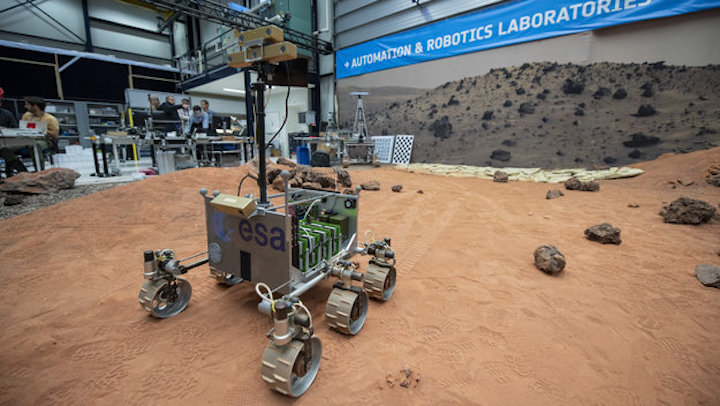
Navigation software destined for the ExoMars 2020 mission to the Red Planet has passed a rover-based driving test at ESA’s ‘Mars Yard’.
ESA’s ExoMars rover will drive to multiple locations and drill down to two metres below the surface of Mars in search of clues for past life preserved underground.
A half-scale version of the ExoMars rover, called ExoMars Testing Rover (ExoTeR), manoeuvred itself carefully through the red rocks and sand of the 9 x 9 m ‘Planetary Utilisation Testbed’, nicknamed the Mars Yard, part of ESA’s Planetary Robotics Laboratory at ESTEC in the Netherlands.
Carefully calculating its onward route, ExoTeR progressed at a rate of 2 m per minute – still several times faster than the actual ExoMars rover will drive, which will progress at 100 m per martian day.
The two-day rover test was conducted by ESA robotic engineers, joined by a team from France’s space agency CNES in Toulouse. They have more than two decades of experience in autonomous navigation for planetary rovers, culminating in developing the ‘AutoNav’ suite of software that was doing the driving.
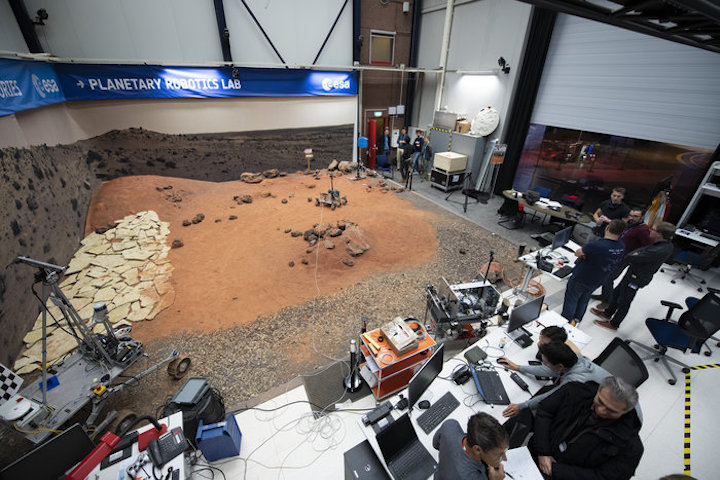
During 2017 ExoTeR was passed to ALTEC in Italy, the site of ExoMars’s rover monitoring and control centre, to allow the control team to train with the advanced rover. In December, the rover returned to ESTEC for an upgrade to its autonomous navigation algorithm.
The navigation test followed, confirming the software was functioning well. ExoTeR has now returned to Italy, permitting the ALTEC control team to gain experience working with the added functionality of autonomous navigation.
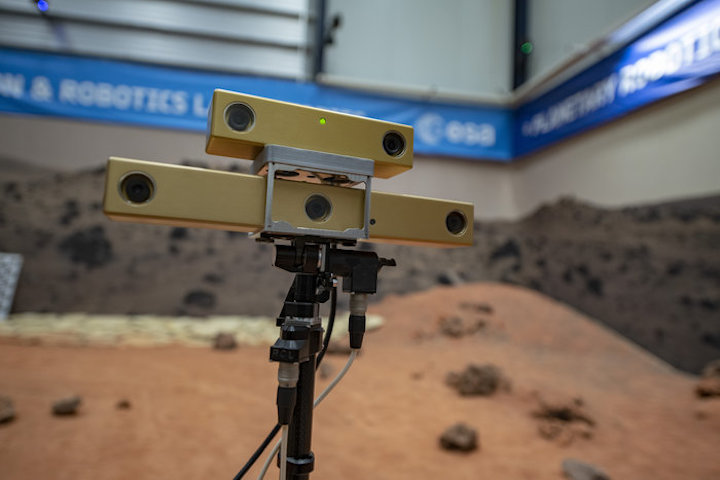
The enormous distance from Earth to Mars equals a signal delay of between four and 24 minutes, making direct control of ExoMars impractical. Instead the rover will be capable of making some of its own decisions.
“Rather than sending complete hazard-free trajectories for the rover to follow, autonomous navigation allows us to send it only a target point,” explains ESA robotics engineer Luc Joudrier.
“The rover creates a digital map of its vicinity and calculates how best to reach that target point. Looking at the map it tries to place the rover in all these adjacent locations to work out if the rover would be safe in every one of these positions – or if the rocks are too high or terrain too steep.
“Working from the local navigation map, the rover computes the safe path toward the goal and begins to move along a segment of the calculated path, at the end of the segment it repeats the same mapping process to progress.
“It is similar to a human walking. We look ahead to decide where we are going but as we walk we peer down at our feet and if necessary change course to avoid obstacles. Once we have chosen a path without obstacles, we make sure we follow that path to remain safe.”
The ExoTeR rover, like the ExoMars rover itself, is equipped with mast-mounted stereo navigation cameras for digital elevation mapping. And as it wheels forward, it constantly checks its onward progress using a pair of cameras in its front chassis.
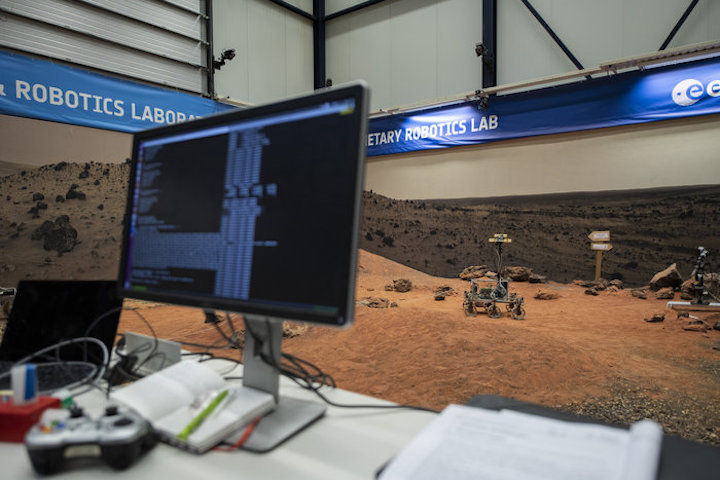
This vision-based motion tracking works better than simply measuring the turn of the rover’s wheels because it allows controllers to take account of any wheel slippage – rovers on Mars have previously been caught in deep sand, and continued wheel turning might actually dig them in deeper.
The ExoTeR rover, complete with updated software, is now set to return to ALTEC in Italy, allowing the control team to gain experience with the added functionality of autonomous navigation ahead of ExoMars’s flight software being completed.
ExoMars’s final flight software will actually carry two sets of autonomous navigation software, with another developed by Airbus in Stevenage, UK.
“The combination should give the rover added flexibility,” says Luc. “The idea is that one might turn out to perform better in more difficult terrain, while the other could move faster along easier ground.”
Quelle: ESA
----
Update: 7.02.2019
.
Name of British built Mars rover revealed
The UK made ExoMars rover, due to roam the surface of the red planet in 2021, has been named after UK scientist and co-discoverer of the structure of DNA - Rosalind Franklin.
The name was revealed this morning by Science Minister Chris Skidmore and British European Space Agency (ESA) Astronaut Tim Peake in the ‘Mars Yard’ at Airbus Defence and Space UK in Stevenage, where the rover is being built.
Chris Skidmore, UK Science Minister said:
It is a tremendously fitting tribute that the rover has been named after Rosalind Franklin as she helped us understand life on Earth and now her namesake will do the same on Mars.
Just as Rosalind Franklin overcame many obstacles during her career, I hope ‘Rosalind the rover’ will successfully persevere in this exciting adventure, inspiring generations of female scientists and engineers to come.
This is a big moment for British science and through our modern Industrial Strategy we are embracing this moment as part of our ambition to be the world’s most innovative economy, creating opportunities for business through science.
Dr Alice Bunn, International Director, UK Space Agency said:
Rosalind Franklin is one of science’s most influential women, and her part in the discovery of the structure of DNA was truly ground-breaking.
It’s fitting that the robot bearing her name will search for the building blocks of life on Mars, as she did so on Earth through her work on DNA.
Over a third of the science instruments used in the ExoMars mission are led by women.
The UK Space Agency is the second largest European contributor to the ESA-Roscosmos ExoMars mission, having invested €287 million in the mission and £14 million on the instruments. This, in addition to successful negotiations with ESA, secured key mission contracts for the UK space sector.
‘Rosalind Franklin’ was chosen by a panel of experts from a shortlist submitted by the public, following a naming competition opened in July last year in which nearly 36,000 people responded. Competition entrants that guessed the final name were invited to the naming ceremony at Airbus where they met astronaut Tim Peake and had a tour of the facility.
Tim Peake, British ESA Astronaut said:
This rover will scout the Martian surface equipped with next-generation instruments – a fully-fledged automated laboratory on Mars. With it, we are building on our European heritage in robotic exploration, and at the same time devising new technologies.
Johann-Dietrich ‘Jan’ Wörner Director General, European Space Agency said:
This name reminds us that it is in the human genes to explore. Science is in our DNA, and in everything we do at ESA. Rosalind the rover captures this spirit and carries us all to the forefront of space exploration.
Colin Paynter, Managing Director Airbus Defence and Space UK said:
Integration of the ExoMars rover, or rather Rosalind, has started here in Stevenage and the teams are now working round the clock in the sterile cleanroom to make sure she will be ready to fly next year.
ExoMars is the culmination of our industry experience over the last half a century where we have worked alongside academia and agencies to push the boundaries in space both for satellites and missions to other planets.
In November experts meeting at the National Space Centre in Leicester chose Oxia Planum near the Martian equator as the landing site for Rosalind due to its geology and the likelihood of finding signs of life.
The Government’s modern Industrial Strategy is backing businesses to succeed by increasing investment in science, because countries that invest in ideas create more opportunities for business. The ambition is for the UK be the world’s most innovative economy – and the development of the ExoMars rover for the UK is a part of this ambition.
Notes to editors:

Rosalind Franklin (1920-1958)
Rosalind Elsie Franklin was a British biophysicist, physicist, chemist, biologist and X-ray crystallographer who made contributions to the understanding of the fine molecular structures of DNA, RNA, viruses, coal and graphite. She went to Newnham College, Cambridge in 1938 and passed her finals in 1941, but was only awarded a degree titular as women were not entitled to degrees at that time. She received a PhD from Ohio University in 1945.
Franklin is best known for her work on the X-ray diffraction images of DNA. Her data was a part of the data used to formulate Crick and Watson’s 1953 hypothesis regarding the structure of DNA. Unpublished drafts of her papers show that she had determined the overall B-form of the DNA helix. Her work supported the hypothesis of Watson and Crick and was published third in the series of three DNA Nature articles. After finishing her portion of the DNA work, Franklin led pioneering work on the tobacco mosaic and polio viruses. Franklin died from ovarian cancer at the age of 37, four years before Crick, Watson and Wilkins were awarded the Nobel Prize in 1962 for their work on DNA. Franklin was unable to receive the prize as Nobel Prizes cannot be awarded posthumously, but she received no mention in the acceptance speeches. Although Franklin’s contribution to the ‘discovery’ of DNA is now widely recognised, there remains a lingering sense that her contribution was unjustly overlooked and undervalued. Her contribution was not recognised in many science books until the 1990s. Courtesy of the Royal Society
The ESA ExoMars Mission
The rover is part of the ExoMars programme, a joint endeavour between ESA and the Russian State Space Corporation, Roscosmos.
The main aims of ExoMars is to examine the geological environment on Mars and search for evidence of environments that may have once, and perhaps could still, support life. It will also assist in preparing for other robotic missions, including a Mars Sample Return mission, and possible future human exploration. Data from the mission will also provide invaluable input for broader studies of Martian geochemistry, environmental science and exobiology - the search for evidence of life on other planets.
As the first European rover to traverse the surface of Mars, Rosalind Franklin will uniquely drill down to two metres into the Martian surface allowing the rover’s scientific instruments to sample and analyse the soil, determine its mineral content and composition, and search for evidence of whether past environments could once have harboured life.
The rover will roam around the Martian surface by using electrical power generated from its solar arrays. The rover’s software will have a degree of ‘intelligence’ and autonomy to make certain decisions on the ground and will navigate using optical sensors.
The rover will relay data to Earth through the Trace Gas Orbiter, a spacecraft searching for tiny amounts of gases in the Martian atmosphere that might be linked to biological or geological activity since 2016.
UK mission content
Airbus Defence and Space in Stevenage is leading the build of the rover while the UCL Mullard Space Science Laboratory is leading on a key instrument known as the PanCam, a high-resolution 3D camera which will be used to look at the terrain and rocks to try to detect signs of life.
The University of Leicester and Teledyne e2v are working on the Raman Spectrometer with STFC RAL Space providing some of the electronics, including the data processing board.
Quelle: UK Space Agency
----
Update: 8.02.2019
.
Rosalind Franklin: Mars rover named after DNA pioneer
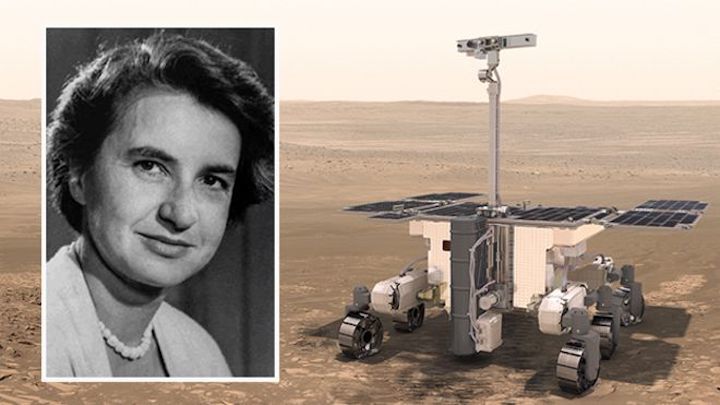
The UK-assembled rover that will be sent to Mars in 2020 will bear the name of DNA pioneer Rosalind Franklin.
The honour follows a public call for suggestions that drew nearly 36,000 responses from right across Europe.
Astronaut Tim Peake unveiled the name at the Airbus factory in Stevenage where the robot is being put together.
The six-wheeled vehicle will be equipped with instruments and a drill to search for evidence of past or present life on the Red Planet.
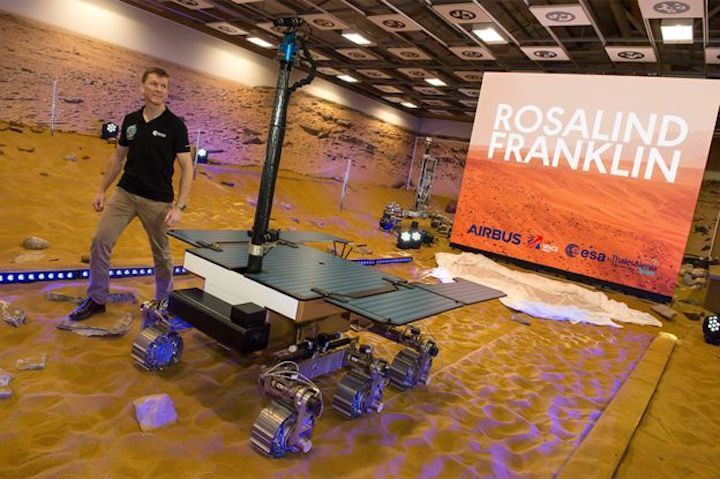
Giving the rover a name associated with a molecule fundamental to biology seems therefore to be wholly appropriate.
Rosalind Franklin played an integral role in the discovery of the structure of deoxyribonucleic acid.
It was her X-ray images that allowed James Watson and Francis Crick to decipher its double-helix shape.
Franklin's early death from ovarian cancer in 1958, aged just 37, meant she never received the recognition given to her male peers.
The attachment to the European Space Agency (Esa) rover will now see her name travel beyond Earth.
"In the last year of Rosalind's life, I remember visiting her in hospital on the day when she was excited by the news of the [Soviet Sputnik satellite] - the very beginning of space exploration," Franklin's sister, Jenifer Glynn, said on Thursday.
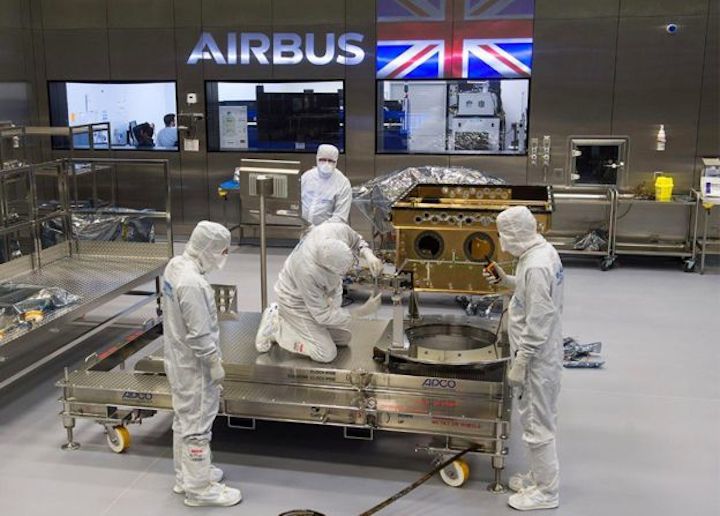

Who was Rosalind Franklin?
In 1952, Rosalind Franklin was at King's College London investigating the atomic arrangement of DNA, using her skills as an X-ray crystallographer to create images for analysis.
One of her team's pictures, known as Photo 51, provided the essential insights for Crick and Watson to build the first three-dimensional model of the two-stranded macromolecule.
It was one of the supreme achievements of 20th Century science, enabling researchers to finally understand how DNA stored, copied and transmitted the genetic "code of life".
Crick, Watson, and King's colleague Maurice Wilkins, received the 1962 Nobel Prize for the breakthrough.
Franklin's untimely death meant she could not be considered for the award (Nobels are not awarded posthumously). However, many argue that her contribution has never really been given the attention it deserves, and has even been underplayed.
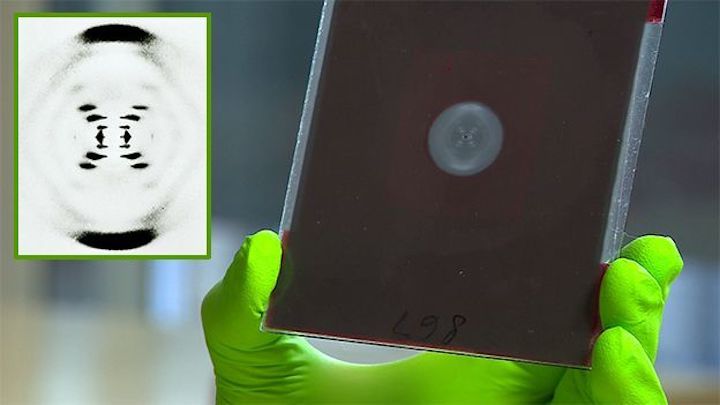
How was the rover name selected?
Up until now, the rover has simply been known by its Esa project name - ExoMars.
In the UK, many people have also become familiar with the names given to the prototype robots that Airbus built to trial the vehicle's technology.
These have been names like Bridget, Bruno and Bryan. The "B" letter is a play on the word "breadboard" - the term describing the bald plate engineers use to design new electronic circuitry.
But it has become common practice now for space missions to have a ceremonial name.
Sometimes these are just glorified acronyms that summarise the mission goals, but often they reference a historical figure who made a significant contribution in a relevant field of science.
For recent European Space Agency projects, Italian scientists have been honoured, including Giuseppe "Bepi" Colombo (Mercury mission) and Giovanni Schiaparelli (a previous Mars lander).
Rosalind Franklin was chosen by a UK-led panel who sifted through 35,844 suggestions.
"We had the usual clutch of acronyms, deities and inspirational words, but when we got down to the short shortlist - it was the obvious choice. It ticks all the boxes," Dr Sue Horne, the head space exploration at the UK Space Agency, told BBC News.
Britain essentially got the naming rights because it has put most money into the rover.
"Rover McRoverFace" was suggested but the UK Space Agency made it clear at the outset that there would be no repeat of the furore that accompanied the naming of Britain's new polar ship.
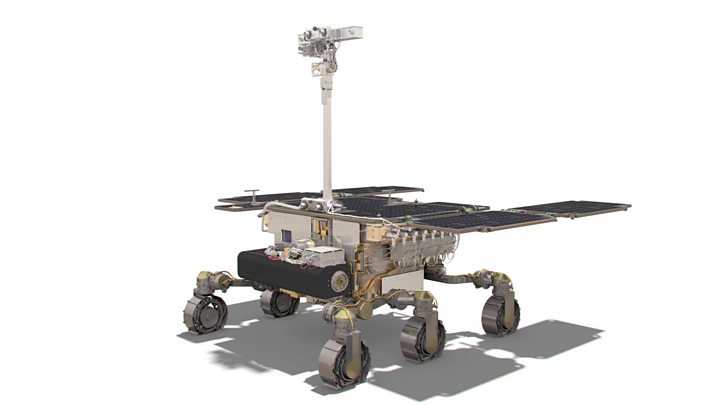
At what stage is the rover project?
The rocket that will send the Franklin rover to Mars is booked to launch in July/August 2020. The various components needed for the mission are gradually coming together under the direction of Esa and its partner on the venture - the Russian space agency, Roscosmos.
British engineers are on target to deliver a finished robot at the end of July. This will go first to an Airbus test centre in Toulouse, France. From there, it will head east, to Cannes.
On the Côte d'Azur, the Franklin rover will be integrated with its German "cruise" capsule, which will carry it to the vicinity of the Red Planet, and the Russian landing mechanism, which will have the all-important job of putting the rover down safely on the surface of Mars in March 2021.
From Cannes, these elements go to the Baikonur Cosmodrome to be mated with the launch rocket.
The schedule is tight, conceded Prof Jan Wörner, the director-general of Esa: "It's a challenge but we're working really hard to make the launch date."
Airbus has built a special "cleanroom" to assemble the rover. The Franklin vehicle's parts are being brought to Stevenage from across Esa member states and Canada. The North Americans are making the locomotion system - the wheels.
Quelle: BBC
----
Update: 12.02.2019
.
Launch window for 2020 ExoMars mission to open on July 25 — ESA
For the second ExoMars mission, Russia is preparing a landing platform together with scientific instruments and a Proton carrier rocket

The launch window for the Russian-European ExoMars-2020 mission will open on July 25 and last about four weeks, Head of the European Space Agency’s (ESA) Office in Moscow Rene Pischel told TASS on Tuesday.
"As of today, the mission’s launch is scheduled for July 2020. The launch window, which will last three-four weeks, will open on July 25," he said.
For the second ExoMars mission, Russia is preparing a landing platform together with scientific instruments and a Proton carrier rocket. The European side is preparing a Mars rover and a transfer module.
"The European side is trying to keep to the schedule. I can say that both sides are taking efforts so that everything is prepared and tested on time," Pischel said.
The ExoMars-2020 mission’s spacecraft is designed to deliver the Russian landing platform to Mars for placing the European rover onto the Red Planet’s surface. After disembarking the rover, the platform will begin to work as a longtime autonomous research station for studying the composition and properties of Martian surface and atmosphere. The European rover will house the Pasteur scientific laboratory to study directly the surface and the atmosphere of Mars in the landing area, search for compounds and substances that could testify to the possible existence of life on Mars.
The first stage of the ExoMars project was launched in 2016 and the mission included the TGO (Trace Gas Orbiter) apparatus and the Schiaparelli demonstrator landing module, which reached the Red Planet in October 2016.
The key goal of the TGO mission is to gain a better understanding of methane and other atmospheric gases present in the Martian atmosphere that could be evidence for possible biological or geological activity.
The Schiaparelli landing demonstrator vehicle was expected to practice maneuvers to enter the Martian atmosphere, descend and land on the Red Planet before the launch of the mission’s second stage but failed to make a soft landing and crashed.
Quelle: TASS

